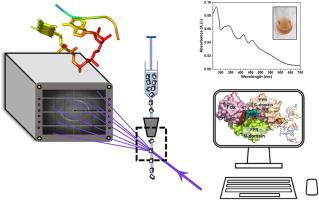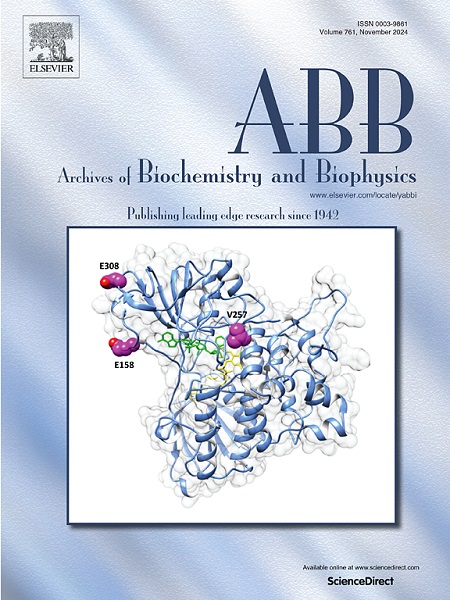对布鲁氏菌中铁红蛋白-NADP+还原酶的功能和分子机制的新认识。
IF 3.8
3区 生物学
Q2 BIOCHEMISTRY & MOLECULAR BIOLOGY
引用次数: 0
摘要
细菌铁氧还原酶(黄酮苷)-NADP+ 还原酶(FPR)主要催化还原等价物从 NADPH 到铁氧还原酶(或黄酮苷)的转移,为氧化还原代谢提供低电位还原等价物。此外,它们还参与调节活性氧水平。在这里,我们评估了来自 B. ovis 的 FPR 的功能,以了解其在细菌生理过程中的潜在作用。我们证明这种 FPR 与内源性 [2Fe-2S] Fdx 铁氧还蛋白具有活性,其 KMFdx 在低微摩尔范围内。在分子水平上,本研究首次通过串行飞秒晶体学方法获得了室温下的 FPR 结构,设想 FAD 的腺嘌呤核苷酸分子和 C 端尾部的柔韧性都会增加。此外,所制备的微晶还适用于未来在同步加速器或 XFEL 上对 NADP+/H 辅酶进行混合注入式时间分辨研究。此外,该研究还预测了 FPR 同时与 Fdx 和 NADP+/H 相互作用的能力。本文章由计算机程序翻译,如有差异,请以英文原文为准。

New insights into the function and molecular mechanisms of Ferredoxin-NADP+ reductase from Brucella ovis
Bacterial ferredoxin(flavodoxin)-NADP+ reductases (FPR) primarily catalyze the transfer of reducing equivalents from NADPH to ferredoxin (or flavodoxin) to provide low potential reducing equivalents for the oxidoreductive metabolism. In addition, they can be implicated in regulating reactive oxygen species levels. Here we assess the functionality of FPR from B. ovis to understand its potential roles in the bacteria physiology. We prove that this FPR is active with the endogenous [2Fe–2S] Fdx ferredoxin, exhibiting a KMFdx in the low micromolar range. At the molecular level, this study provides with the first structures of an FPR at room temperature obtained by serial femtosecond crystallography, envisaging increase in flexibility at both the adenine nucleotide moiety of FAD and the C-terminal tail. The produced microcrystals are in addition suitable for future mix-and-inject time-resolved studies with the NADP+/H coenzyme either at synchrotrons or XFELs. Furthermore, the study also predicts the ability of FPR to simultaneously interact with Fdx and NADP+/H.
求助全文
通过发布文献求助,成功后即可免费获取论文全文。
去求助
来源期刊

Archives of biochemistry and biophysics
生物-生化与分子生物学
CiteScore
7.40
自引率
0.00%
发文量
245
审稿时长
26 days
期刊介绍:
Archives of Biochemistry and Biophysics publishes quality original articles and reviews in the developing areas of biochemistry and biophysics.
Research Areas Include:
• Enzyme and protein structure, function, regulation. Folding, turnover, and post-translational processing
• Biological oxidations, free radical reactions, redox signaling, oxygenases, P450 reactions
• Signal transduction, receptors, membrane transport, intracellular signals. Cellular and integrated metabolism.
 求助内容:
求助内容: 应助结果提醒方式:
应助结果提醒方式:


